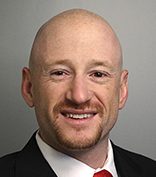What should a judge do when creditors claim that they were harmed by management and a board’s carelessness or disloyalty? If the creditors were shareholders, the judge would apply fiduciary duty doctrines to determine liability. Yet it’s unclear what legal doctrines offer creditors redress. In a new chapter, we examine how judges have struggled with that issue over much of American history. We pay special attention to the approach of judges in Delaware, the most important jurisdiction for corporate law. We trace three generations of jurisprudence that each takes a different approach to whether judges should use equitable doctrines to protect creditors and which doctrines they should be.
In a first generation of jurisprudence, judges applied U.S. Supreme Court Justice Joseph Story’s “trust fund doctrine” to fashion a remedy for creditors who claimed they were wronged by managers, directors, or other creditors. In connection with a failed bank corporation, Story wrote that “[t]he charters of our banks make the capital stock a trust fund for the payment of all the debts of the corporation.” The doctrine allowed judges to help creditors by treating insolvent corporations as quasi-“trust funds,” implying that managers and directors would have similar responsibilities to a trustee who operated the trust fund for the benefit of creditors. To the extent managers and directors failed to meet their responsibilities, they could be liable if assets were hidden or wasted. However, the trust fund doctrine was widely criticized for being nebulous and difficult to administer and has faded in modern times, although it remains a potentially viable theory in many states.
In Delaware, a second generation of jurisprudence deployed fiduciary duty law as an equitable tool that judges could use to protect creditors against managerial overreach. Against the backdrop of the corporate debt boom of the 1980s, some commentators urged courts to protect creditors from what they saw as shareholder value expropriation. Perhaps in response, the Delaware Chancery Court held in the 1991 Credit Lyonnais Bank Nederland, N.V. v. Pathe Communications, Corp. decision that “[a]t least where a corporation is operating in the vicinity of insolvency, a board of directors is not merely the agent of the residue risk bearers [i.e., the shareholders], but owes its duty to the corporate enterprise.” In the year following Credit Lyonnais, another chancery court decision, in Geyer v. Ingersoll, reaffirmed the duty-shifting framework providing creditors fiduciary duties when a corporation enters insolvency. This legal evolution reached a zenith in the early 2000s, when Delaware courts flirted with going beyond fiduciary duty law and recognizing “deepening insolvency” tort claims that could be brought by creditors against managers who made decisions that exacerbated financial distress. These cases were widely criticized by academics and other commentators as providing murky guidance for boards and altogether unnecessary. Creditors, they reasoned, had the ability to protect themselves with their loan contracts and could also look to bankruptcy law and fraudulent transfer law to protect themselves from opportunistic behavior.
In the third generation of jurisprudence, which began around the time of the financial crisis, Delaware judges effectively bowed to criticism of the second generation and abandoned the long-standing project of using equitable rules to protect creditors. In a series of cases in the 2000s, most importantly the 2007 Gheewalla decision, Delaware’s corporate law judges told creditors to look for protection to other areas of law, such as bankruptcy law, fraudulent transfer law, and, especially, their loan contracts. In 2014, Quadrant Structured Products confirmed that Gheewalla marked an important shift in the law:
[It is not] accurate any longer to say that the directors of an insolvent corporation owe fiduciary duties to creditors. It remains true that insolvency ‘marks a shift in Delaware law,’ but that shift does not refer to an actual shift of duties to creditors (duties do not shift to creditors). Instead, the shift refers primarily to standing: upon a corporation’s insolvency, its creditors gain standing to bring derivative actions for breach of fiduciary duty, something they may not do if the corporation is solvent, even if it is in the zone of insolvency.
The holding of Quadrant Structured Products made clear that this right to bring derivative claims would be strictly limited, as the practical effect of “insolvency” for boards of directors would be to immunize more of their decisions from liability, not to expand the realm of potential liability. Going forward, boards of directors could choose to make conservative decisions and could rely on “insolvency” to protect themselves against shareholder lawsuits complaining that the board failed to take enough risk. However, “insolvency” would not mean that creditors could seek remedies if the board took too much risk. That decision would also be protected under the business judgment rule.
As we show, at least in Delaware, corporate law has now largely retreated from its decades-long adventure with protecting creditors. But this is an anomaly in American history, and judges may be tempted to change the law again to help when creditors complain of managerial overreach, as they have time and again. We do not think we have reached the “end of history” in creditor protection. In fact, as the current marketplace is replete with abuse of creditors by private equity sponsors in particular, that day may arrive sooner than we think.
This post comes to us from Professor Jared A. Ellias at the University of California – Hastings and Robert J. Stark at Brown Rudnick LLP. It is based on their forthcoming chapter, “Delaware Corporate Law and the ‘End of History’ in Creditor Protection,” available here.
 Sky Blog
Sky Blog

